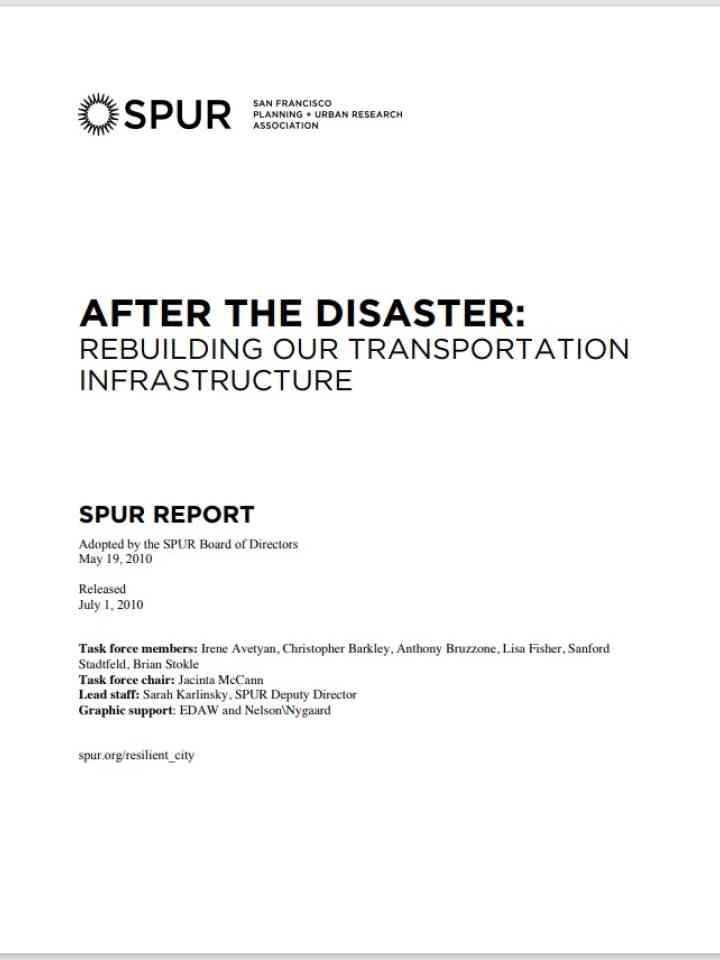After The Disaster: Rebuilding Our Transportation Infrastructure
The report focuses on the vulnerabilities of San Francisco's transportation infrastructure and proposes strategies for rebuilding after a major earthquake. The document highlights the critical importance of preparing for both expected and extreme seismic events, particularly for transportation lifelines such as bridges, tunnels, and transit systems. The report draws on past experiences, such as the 1989 Loma Prieta earthquake, to emphasize the need for a resilient transportation network that can recover quickly and maintain connectivity within the city and to surrounding regions. Key vulnerabilities identified include the Bay Bridge, Transbay Tube, and major freeways like Highway 101 and I-280. The report also explores scenarios where multiple transportation links fail simultaneously, outlining the potential impacts on mobility and proposing contingency plans, such as enhanced ferry services and bus bridges.
In addition to immediate recovery measures, the report advocates for long-term projects to create redundancy in the transportation network, such as building a second transbay tube and expanding ferry capacity. Recommendations are made for pre-disaster planning, including the development of mutual aid agreements, emergency park-and-ride locations, and reserve bus fleets. The report underscores the importance of coordination across agencies and emphasizes that a well-prepared transportation system is crucial for the region's economic resilience and overall recovery in the aftermath of a disaster.
Explore further
